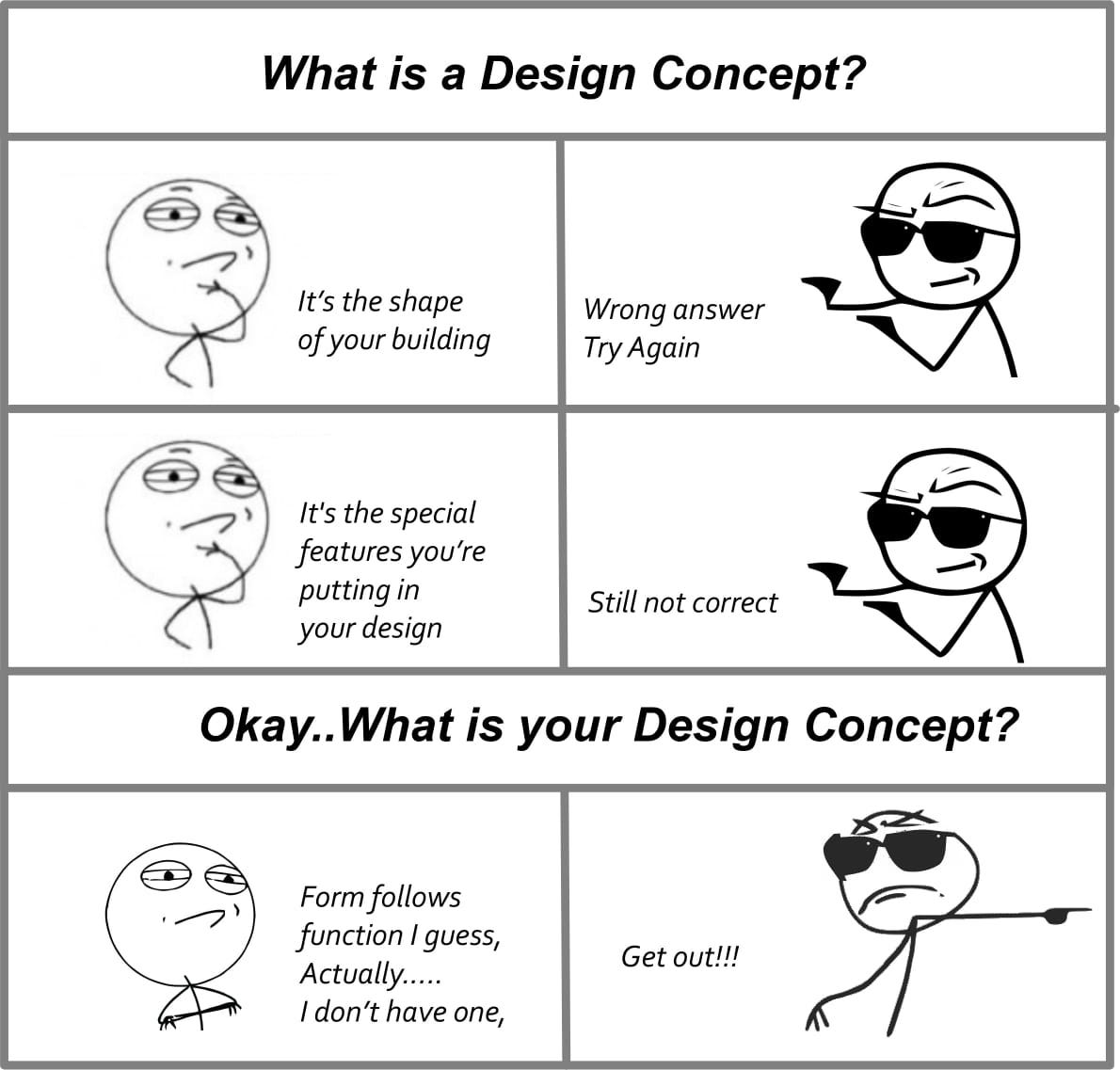Design Concept
TOPIC 1: DEFINITION OF A DESIGN CONCEPT:
What is a Design Concept?

A key component of every architecture project is a well-developed design concept. But what exactly is a design concept, and what makes it good? Let's debunk some common misconceptions and explore the characteristics of a compelling concept.
Distinguishing Concept from Design Elements:
Not just form or shape: While form can inform a concept, it's not the sole definition. Different architects might express the same concept through unique shapes and forms.
Beyond materials and spaces: Materials and spatial arrangements reflect the concept, but they don't constitute it. Imagine using "stone" or "lighting and ventilation" as your concept; these are common design strategies, not unique ideas.
The Essence of a Good Design Concept:
More than building blocks: Conceptual elements like materials and spaces are tools to express the larger idea. They aren't the concept itself.
It's all about intentionality: A good concept influences how these elements are used and arranged throughout the design. Think of them as building blocks that bring the central idea to life.
Don't shy away from it: Having no concept separates construction from architecture. The latter imbues buildings with purpose and meaning, allowing users to experience a unique story.
Concept as guidance: When facing challenges or uncertainties, a strong concept serves as a guiding light, ensuring your design stays on track and tells a cohesive story.
Qualities of a Strong Design Concept:
Central idea: It encapsulates the project's core essence, influencing all design decisions – form, materials, site, space layout, user experience, etc.
Abstract yet impactful: While often intangible, it should be felt and experienced through every aspect of the building and its spaces.
Uniqueness and story: It sets your design apart and tells a compelling narrative, enriching the user's experience and giving the building a deeper reason for being.
Example:
The image exemplifies a key design principle: the power of a unifying concept. Here, the "White Party" concept guides everything, from the dress code to the interior design and music, creating a cohesive and immersive experience.
This extends beyond just "White Parties". Imagine blue, red, black, or any other color party – each with its own distinct concept. The beauty lies in exploring the same event through diverse, well-defined themes. This is the essence of a successful design concept.
Similarly, a strong design concept can significantly impact the design process and its outcome. It acts as a central anchor, influencing decisions at every stage of development. Ultimately, it shapes the user experience, dictating how people feel and interact with the finished space.
Think of the "White Party" concept. Guests likely feel sophisticated, elegant, and perhaps even a touch mysterious. This intended emotion informs every design choice, from the stark white decor to the minimalist furniture and ambient lighting.
Remember, a well-defined and impactful design concept can elevate your project from simply functional to truly memorable and engaging.




